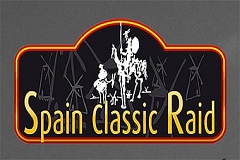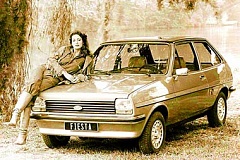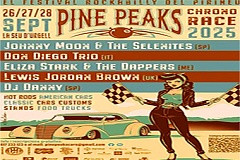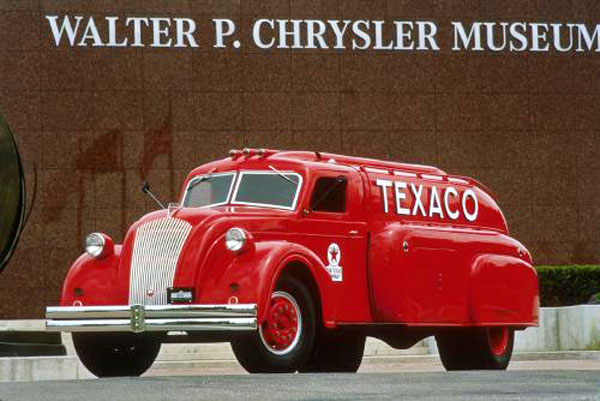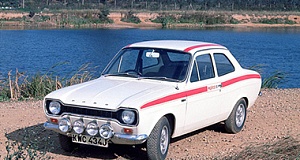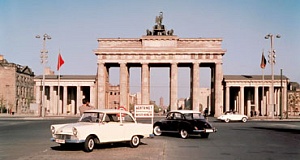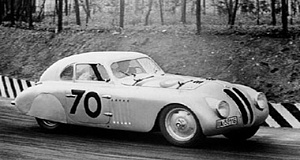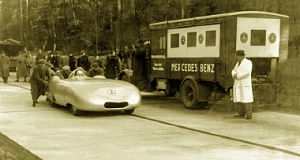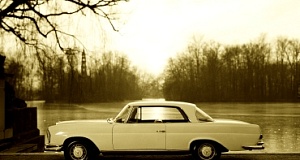Historia de los Inicios
Los hermanos John y Horace Dodge, mecánicos , pasaron de sus humildes inicios a convertirse en gigantes de la industria automotriz americana. En 1901, después de varios años dedicados a la construcción de bicicletas y componentes de todo tipo para la industria automotriz, los hermanos Dodge fundaron un taller mecánico en Detroit ,donde comenzaron a producir las transmisiones de la Olds Motor Works y la construcción de motores para Henry Ford, quien más tarde les ofreció el 10% de las acciones de la compañía .
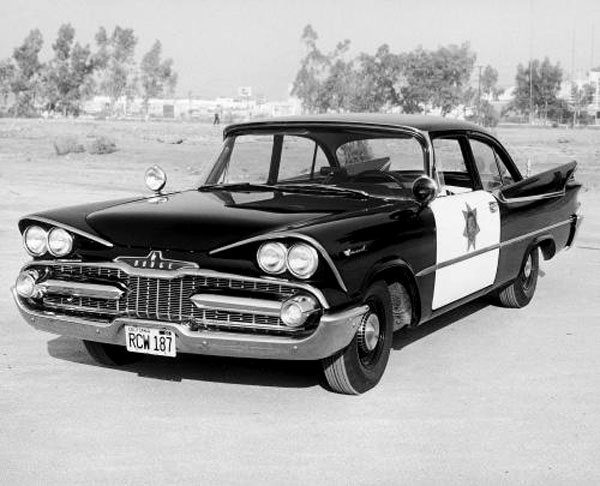
El éxito no tardó en llegar. Dodge construía todos los componentes mecánicos para los automóviles de Ford, y su firma pronto se convirtió en la mayor empresa de piezas de automóviles del mundo. Pero se enfrentaron con Ford a causa las finanzas y terminó la relación en una total frustración después de 12 años de unión.

Timeline
1901-1914: Brothers John and Horace Dodge, talented machinists and ambitious businessmen, rose from humble beginnings to become giants in the early American automobile industry. In 1901, after several years of building bicycles and piecework components for the budding auto industry, the brothers founded a machine shop in Detroit and began producing transmissions for the Olds Motor Works. Within a year, they agreed to build engines for Henry Ford, stopped building components for Olds, and accepted Ford’s offer of 10 percent of his company’s stock.
Success came quickly. The Dodges built all of the mechanical components for Ford’s early cars, and their firm soon became the largest automotive parts company in the world. But they sparred with Ford over finances and ended the relationship in frustration after 12 tumultuous years.
1914-1924: In 1914, the brothers formed a new company, Dodge Brothers, Inc., capitalized with $5 million in common stock, and began building their own vehicles — the world’s first mass-produced all-steel touring cars. In 1915, more than 45,000 Dodge cars were built and sold, the best first-year sales record for a new car in the industry at the time.
General John J. Pershing’s successful use of 250 Dodge touring cars during the 1916 Mexican border campaign against Pancho Villa further enhanced the brand’s reputation, and by 1920 Dodge was the second-best selling car in America.
Capitalizing on their products’ quickly established reputation for reliability and value, the Dodge Brothers firm began using the word “dependability” in advertising. Customers responded, and by 1925, one million Dodge cars had been manufactured and sold.
With their early passenger cars earning recognition for durability and value, the Dodge brothers soon began considering ways to convert their successful car platform to truck applications. During 1917, their firm began producing “commercial cars,” including military ambulances and screen-sided business trucks. Panel delivery trucks, fire trucks, pickups, chassis-cabs and other models were soon offered.
During 1920, the company lost its founding fathers. John Dodge died in January and his younger brother Horace succumbed the following December.
In 1921, Dodge Brothers agreed to market Graham Brothers medium-duty trucks through its dealerships; in turn, every Graham vehicle utilized a Dodge engine. This partnership provided Dodge dealers with a full line of trucks to sell in addition to the highly regarded Dodge passenger cars, and the resulting sales increases prompted Dodge to buy the Graham Brothers firm.
1925-1929: A New York investment banking firm paid the brothers’ widows, in a single cash payment, $146 million for the Dodge Brothers firm. Within three years, the bankers initiated negotiations with Walter Chrysler to buy Dodge. When the $170 million transaction was completed on July 31, 1928, Chrysler Corporation had grown fivefold overnight to become the third of Detroit’s “Big Three” automakers.
1930-1941: In 1930, “Dodge Brothers” became simply “Dodge,” and the brand’s first eight-cylinder engine was completed. The distinctive ram’s head hood ornament, designed by sculptor Avard T. Fairbanks, first appeared in 1932.
Through the 1930s, Dodge continued to expand its passenger car line, adding contemporary options like radios and straight-eight engines. A four-door sedan built in 1935 was the brand’s three-millionth car. But other vehicles in the Dodge lineup were gaining in popularity; the purchase of Graham Brothers had made Dodge one of the leading single-brand producers of light- and medium-duty trucks.
1942-1945: During World War II, Dodge-made war materials appeared in weapons, tanks, ships, aircraft and air raid sirens. Particularly notable among Dodge’s contributions were more than 500,000 military trucks and over 18,000 aircraft engines.
1946-1954: In the postwar years, Dodge vehicles evolved slowly from earlier designs and maintained a tall, boxy appearance. Prewar Dodge model designations like Custom and Deluxe were replaced with more colorful names like Meadowbrook, Coronet and Wayfarer.
Optional at extra cost in the 1953 Coronet was the new Red Ram “HEMI-Head” engine, the first Dodge V-8 in 20 years and first of the soon-to-be-legendary HEMI® engines that would equate the words “Dodge” and “speed” for generations. Lee Petty captured Dodge’s first NASCAR win, while another Dodge V-8 won the Mobil Economy Run.
One year later, a Dodge Royal 500 paced the Indianapolis 500-Mile Race, HEMI-powered Dodges set 196 speed records at the Bonneville Salt Flats – and the Dodge Firearrow idea car, produced by Carrozzeria Ghia in Italy, offered a dramatic hint of changes to come in Dodge product design.
1955-1960: The much-needed restyling came in 1955, part of Chrysler design chief Virgil Exner’s heralded Forward Look makeover, an overnight transformation of all the company’s products. Notable among the longer, lower and wider Dodge redesigns were the luxurious Custom Royal models, which offered push-button transmission selectors, three-tone paint schemes, a variety of trim options and V-8 power.
With these high-powered, high-style cars, Dodge began to establish its reputation as Chrysler’s performance brand. In 1955, Dodge built 237,000 V-8s in a 273,000-unit model year. Dodge upped the horsepower stakes in 1956 with the D-500 HEMI V-8; the manual transmission-equipped version boasted 295 horsepower, compared to the 189-horsepower rating of that year’s standard Dodge V-8. Dodges won 11 NASCAR races in 1956, a number that wouldn’t be matched until 1964.
Another one-of-a-kind Dodge in this era was the LaFemme, a car specifically marketed to women. Clad in special Heather Rose and Sapphire White colors, the HEMI-powered LaFemme featured special interior tapestry with pink rose buds, pink trim and a matching umbrella, rain bonnet and make-up case.
Beginning with the 1957 models, Dodges became even lower and longer, giving emphasis to their dramatic tailfins, an iconic Chrysler design feature of the era. The light-filled, curved-glass cabins and broad, flat surfaces reflected a fundamental change, quickly copied by competitors, in the proportions of the American automobile.
1961-1968: Dodge entered the small-car (or “compact”) field for the first time in 1961 with the Lancer, a uniquely styled car that was almost two feet shorter and 700 pounds lighter than a full-size Dodge. This platform provided the basis for a series of Chrysler cars that were to capture 40 percent of the total American compact market in the early 1970s. Subsequent Dodge spin-offs included the 1963-76 Dart, the 1970-76 Swinger and the 1971-72 Demon.
Even so, full-size cars were still very much in demand throughout the 1960s. The 1965 Dodge large-car lineup contained 13 models, including the sporty Polara and the plush new Monaco with bucket seats front and back. A remarkable array of optional convenience, trim and powertrain choices, including no fewer than 10 different engines, kept car shoppers busy.
To maintain Dodge’s performance image, the 413-cubic-inch Ramcharger Max-Wedge engine was introduced in 1962. One year later, the larger 426-A Ramcharger appeared; it boasted 425 horsepower and quickly found appreciative audiences at drag strips nationwide.
New on showroom floors in 1966 was the first Dodge Charger, a fastback auto show concept car brought to life using the underpinnings of the mid-size Dodge Coronet. Dramatically restyled two years later, the 1968 Charger sold three times as well as its 1966 predecessor and became one of the company’s most memorable and successful vehicles.
During the mid-1960s, Dodge expanded its reputation as a performance brand with high-powered products for both racing and street applications. Roger Linamood drove the “Color Me Gone” Dodge to the National Hot Rod Association’s Top Eliminator title, and a Ramcharger-equipped rail dragster set a new national speed record of 190.26 mph.
1969-1981: For NASCAR racing, Dodge resurrected the hemispherical-head concept in a new 426-cubic-inch HEMI-Charger engine for competition use only, which soon proved capable of generating some 500 horsepower. A special Daytona Charger race car equipped with a HEMI-Charger, an elongated nose piece and a roof-high spoiler attached at the rear took the checkered flag at the 1969 Daytona 500.
America’s fondness for fast cars was effusively addressed by Dodge during the “muscle car” era of the late '60s and early 1970s. Placing large V-8 engines in intermediate-size cars with optional levels of accessorizing brought drag strip-style performance to street racers and distinctive collector cars to thousands of other buyers. Notable Dodge nameplates from the muscle car period include the Charger R/T (for Road and Track), the Coronet R/T, with a 440-cubic-inch Magnum V-8 engine as standard equipment, the Super Bee and, after 1970, the Challenger.
The effects of the 1973 oil crisis, which spawned skyrocketing prices for both crude oil and retail gasoline, were new government emissions regulations and rising insurance rates that combined to bring the muscle-car era to a close and generate new interest in smaller, more fuel-efficient cars. Dodge responded with the subcompact Omni, one of the first American-made cars with front-wheel drive.
1982-1991: In 1982, Dodge introduced the compact Aries, its version of the famous Chrysler K-car that would prove instrumental to the company’s financial recovery following a series of financial reverses.
Perhaps the best-known — and certainly the most popular — of Dodge’s recent products is the Caravan front-wheel-drive minivan. Introduced in the 1984 model year, the Caravan combined the comfort of a car with the space of a van and yet it fit in a standard garage.
1992-1998: Resurrecting its performance-brand heritage, Dodge in 1992 created a stir with the launch of the Viper, a V-10-powered, two-seat sports car that set the stage for an all-new mid-'90s Dodge product lineup, including the large Intrepid, the mid-size Stratus, the compact Neon and the unmistakable new Ram pickup truck.
In 1996, the new Viper coupe paced the Indianapolis 500, driven by Chrysler president Bob Lutz.
1998-2007: On the occasion of the Dodge brand’s 90th anniversary in 2004, it could be said that the brothers’ vision for their enterprise had been fulfilled. Millions of customers still appreciated the dependable Dodge difference in passenger cars. Dodge remained a leader in the modern-day truck market, producing a variety of models with numerous powertrain options, including a diesel-electric hybrid. Dodges were again taking the checkered flag at NASCAR events. And the Viper, having won at LeMans and other international venues, maintained the brand’s high-performance reputation on both the race track and the street. What other brand can reflect on such a rich legacy?




